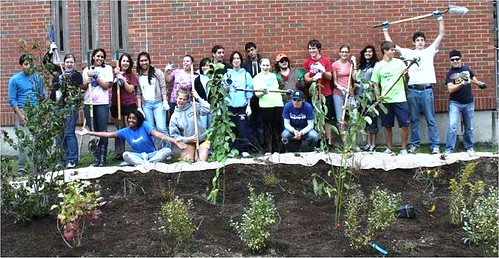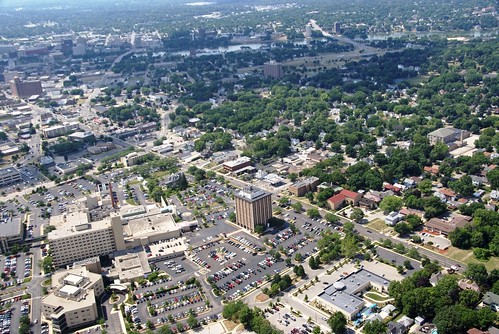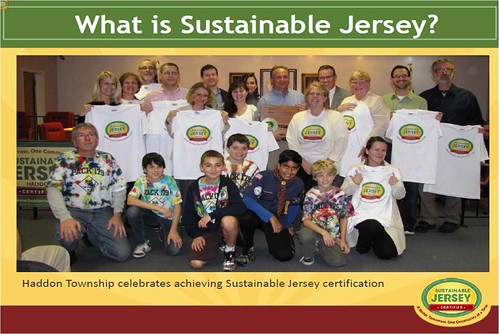Measuring community sustainability: how do we know if we're on the right path?

Posted June 21, 2012 at 1:27PM
Some very interesting things are happening in the world of sustainability measurement, or our ability to gauge how well we are doing in moving neighborhoods, cities and regions toward a healthier future. It’s a new and rapidly evolving field, and in some ways an elusive one: as I’ve written before, there are some concepts critical to our well-being that don’t lend themselves to objectivity, and frankly I think that’s a good thing. As a lover of art, music, romance and matters of the spirit, I don’t particularly want to live in a world that can be entirely reduced to numbers.
But there are some things that are important to our well-being and to our environmental health that we can measure, and it is fascinating to follow the systems some leaders are coming up with, such as the “happiness index” pioneered by the government of Bhutan. Closer to home, I have been impressed by efforts I have recently gotten to know in Illinois and New Jersey. I’ll get to them in a minute; but, first, a little background:
LEED-ND and neighborhood measurement
As longtime readers know, NRDC was deeply involved for the better part of a decade in the construction of a sustainability tool called LEED for Neighborhood Development. (Our partners in the endeavor were the US Green Building Council and the Congress for the New Urbanism.)  The idea was to come up with a set of measurements that can be used to identity and certify smart, green land development, in order to encourage more of it and help us separate the praiseworthy from the pretenders. Our hope was to do for multi-building, neighborhood-scale projects and for smart growth what the LEED systems had already done for individual green buildings.
The idea was to come up with a set of measurements that can be used to identity and certify smart, green land development, in order to encourage more of it and help us separate the praiseworthy from the pretenders. Our hope was to do for multi-building, neighborhood-scale projects and for smart growth what the LEED systems had already done for individual green buildings.
LEED-ND measures things like proximity to transit and existing infrastructure, walkability, mix of buildings and neighborhood amenities, and the likely performance of environmental management systems. Applicants that pass certain prerequisites may then earn credit points toward a certification by the US Green Building Council; as with other LEED systems, the more points, the higher the rating.
Although our system had the misfortune to hit the street at the same time that the Great Recession slowed real estate development to a crawl, I think there is little doubt that we created something useful and influential, if inevitably a bit imperfect.
Over a hundred projects have been certified under the pilot program and the fully launched system, with at least that many more in the pipeline for eventual approval. Some are truly outstanding examples 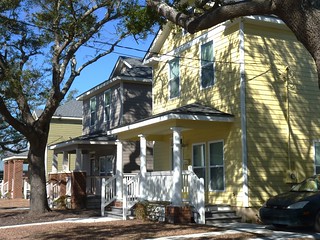 of just the sort of development that brings environmental, social and economic benefits. LEED-ND is better at measuring some things (for instance, transit richness) than others (inclusiveness), but it’s been a good start and will be improved over time.
of just the sort of development that brings environmental, social and economic benefits. LEED-ND is better at measuring some things (for instance, transit richness) than others (inclusiveness), but it’s been a good start and will be improved over time.
Although those of us on the initial team discussed whether our principles could be useful at the scale of whole communities, the measurements break down beyond a certain project size. We did not want to compromise the usefulness or precision of LEED-ND in evaluating increments of private development as they occur by calibrating it more broadly for towns, cities, and regions. We did hope that local governments would find it useful for things like zoning and project approval, and perhaps also for neighborhood plans, but that was as far as we thought we could go.
The larger scale is where Illinois and New Jersey come in.
The “Vital Signs” initiative in Rockford, Illinois
The Rockford, Illinois region – Boone and Winnebago Counties, 80 miles northwest of Chicago’s Loop, on the Rock River, has undergone change due to the decline of its once-thriving economic base of manufacturing. Parts of the region are plagued by crime and vacant properties, while others are doing better. The city of Rockford remains the largest in Illinois outside the Chicago metro area.
In order to establish a stronger future, the region is now developing an ambitious sustainability plan to achieve economic, social, and environmental outcomes in 16 core categories:
- Safety
- Civic vitality
- Cultural life
- Health
- Food
- Housing
- Education
- Economic development
- Technology
- Transportation
- Built environment
- Water
- Land
- Biodiversity
- Energy
- Waste management
For each category, the region is setting 20-year goals; strategies (“action items”) for individuals, households, neighborhoods, organizations, and local governments; and measurements (“indicators”) to determine if the strategies are working. The region also intends to develop a centralized governance process to oversee implementation of the plan, along with implementation tools such as “incentives, policies, codes, [and] regulation,” based on best practices.
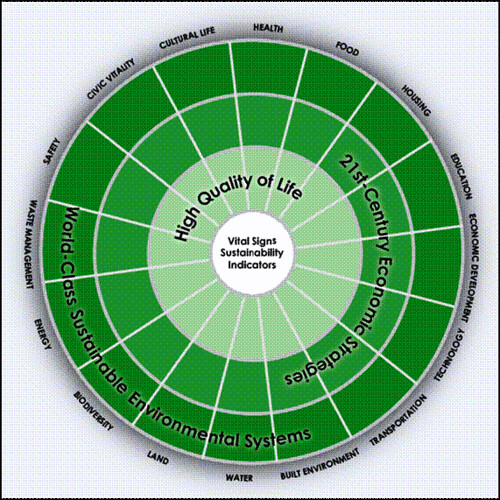
Rockford’s process is not a point-based rating system such as those employed by LEED, which evaluates buildings or neighborhood developments on the basis of documentation at one specific point in time in order to determine a score for each applicant. Rather, the Vital Signs initiative is designed as a system in which measurements are taken at multiple times throughout the 20-year planning horizon, in order to indicate progress and determine whether adjustments in strategy are necessary.
Sustainability indicators are central to Rockford’s process. The region has had some help in developing them: the US Department of Housing and Urban Development awarded a $600,000 grant to the local metropolitan planning organization to assist the performance measuring process, and the MPO is putting the investment to good use.
I took a look at the indicators for the “built environment” category. There are 31 of them, covering such subjects as adaptive re-use of existing properties, districts with smart growth policies, vacant properties, districts that meet LEED-ND standards (!), brownfields, walkability, local food production, redevelopment, and displacement of low-income residents from revitalizing areas. Most are straightforward and appropriate (for example, decrease the number of vacant properties, increase the number of buildings re-used). A couple of them are curious, however.  The list appears to favor a decrease in floor-area ratio, a measure of urban density, in business districts; I wonder if that is just a typo.
The list appears to favor a decrease in floor-area ratio, a measure of urban density, in business districts; I wonder if that is just a typo.
There are 43 indicators for transportation: nine economic, 16 social, and 22 environmental. Among the issues covered are on-time performance of transit (indicator: percentage more than five minutes late or early), frequency of transit vehicles at stops, transportation-related emissions, alternative-fueled vehicles, average travel time to work, per capita vehicle miles traveled, motor vehicle accidents, and mobility of low-income individuals.
To establish and monitor such a large number of indicators for all 16 core categories is a significant and laudable undertaking. The process will be telling, and by its nature creates an incentive for achievement. But maintaining the database over time will be expensive. I hope the region can find adequate budget beyond the duration of the HUD grant.
Sustainable Jersey’s community certification program
Sustainable Jersey, according to its website, “is a certification program for municipalities in New Jersey that want to go green, save money, and take steps to sustain their quality of life over the long term.” The program’s approach includes a point-based rating system similar to those used in LEED, but at a community-wide scale approaching that of the Rockford initiative.
Unlike either of those programs, however, Sustainable Jersey does not employ precise measurements to determine performance achievement but is aimed at a more conceptual and programmatic level. It appears intended not so much for towns and cities that already have well-established environmental programs but for newcomers that the program might motivate to get started on a deliberate process toward sustainability.
For example, the program awards credit points for such activities as energy education and outreach, assessment or education related to environmental justice, inventory of sources of greenhouse gas emissions, creation of a “safe routes to school” plan, adoption of a green jobs “program or initiative,” inventory of natural resources, and demonstration projects for renewable energy or green stormwater infrastructure. The emphasis is on establishing baselines and committing to the concepts more than documenting numerical levels of achievement. 108 communities have been certified under Sustainable Jersey since 2009, 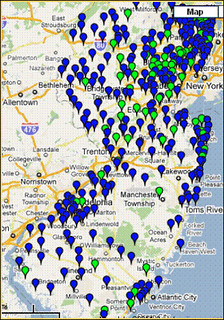 with 260 more registered in the program and looking toward eventual certification.
with 260 more registered in the program and looking toward eventual certification.
The program does contain special incentives for commitment to categories deemed to be particularly valuable. For example, to achieve certification all applicants must create community “green teams” to serve as local environmental leaders and advisers. Applicants must also undertake at least two activities (three to achieve silver level certification) from a list of priority measures:
- Energy tracking and management
- Energy audits for municipal facilities
- Assessment of municipal carbon footprint
- Sustainable land use pledge, voicing commitment to certain smart growth elements
- Natural resources inventory
- Water conservation ordinance
- Green municipal fleet
Certain other credit options are given more weight in the point system than others. These include enrollment in the New Jersey Mayors’ Wellness Program, adoption of a green building and environmental sustainability element in the community’s master plan, a complete streets program, and a species-specific plan to reduce conflicts between humans and wildlife.
While Sustainable Jersey may not demand precision in environmental performance, I am impressed with the ambitious scope of the program, which covers a lot of topical ground, including many categories in addition to the ones mentioned here.  And the program does more than review communities’ activities for certification; it also provides guidance on how to make progress and tap sources of financial assistance. I believe it will make a difference, particularly in increasing awareness of important environmental issues and solutions.
And the program does more than review communities’ activities for certification; it also provides guidance on how to make progress and tap sources of financial assistance. I believe it will make a difference, particularly in increasing awareness of important environmental issues and solutions.
According to the program’s website, Sustainable Jersey was conceived in 2006 by a committee of the state’s League of Municipalities, led by two environmentally committed mayors, Meryl Frank of Highland Park and Fred Profeta of Maplewood. The committee joined forces with the New Jersey Sustainable State Institute at Rutgers University and the Municipal Land Use Center at the College of New Jersey to develop the certification criteria and tools that became the basis for the program.
Some 150 leaders and thirteen task forces were involved in the development of criteria, and the program was officially launched three years ago.
Early support for the effort also included the New Jersey Department of Environmental Protection, the New Jersey Office of Smart Growth and the Rutgers Center for Green Building. More recently, NRDC’s water program has begun working with Sustainable Jersey on refining its approach to green infrastructure for stormwater management.
Here is a neat video on Rockford’s Vital Signs initiative:
Related posts:
- Sustainability in the crazy-quilt world of metro regions (April 30, 2012)
- Tools to help cities and towns guide green development (March 7, 2012)
- HUD launches Sustainable Communities Resource Center (February 16, 2012)
- New HUD grants will help communities pursue sustainability (November 22, 2011)
- Implementing sustainable practices on key urban issues (August 15, 2011)
- Knowing when it's green: A Citizen's Guide to (LEED for) Neighborhood Development (May 25, 2011)
- State-owned Australian developer seeks to measure whole-community sustainability (January 15, 2010)
Move your cursor over the images for credit information.
Please also visit NRDC’s sustainable communities video channel.
